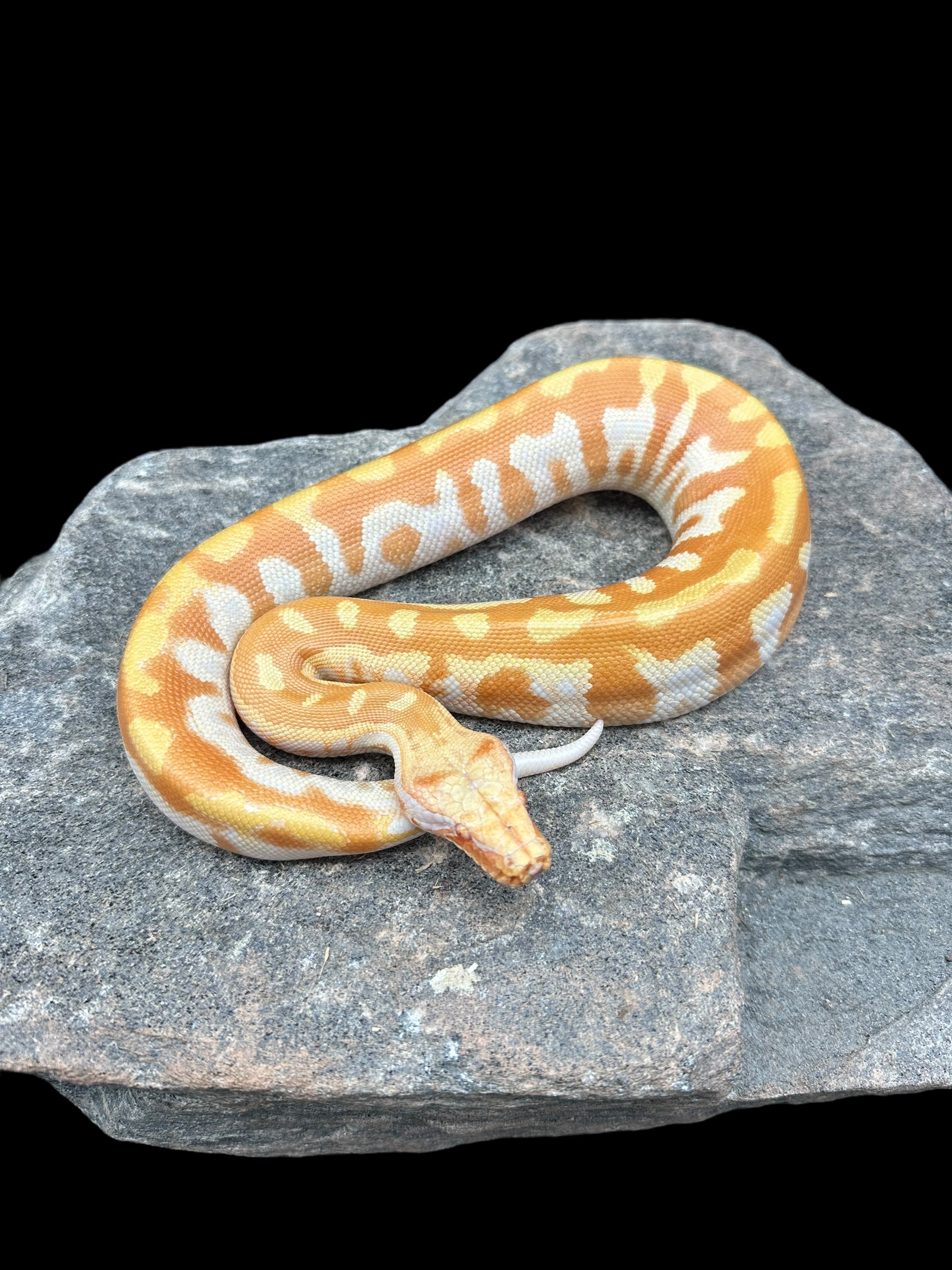Photo Disclaimer
Description
Blood Python (T- Albino)
Python brongersmai
Common Names: Blood Python, Brongersmai Python
(T- = Tyrosinase-Negative Albino, recessive morph)
Species Overview
-
Size: Adults typically measure 4–6 feet (1.2–1.8 m), with females being stockier and heavier-bodied. Rare individuals may exceed 7 feet.
-
Appearance:
-
T- Albino (recessive – visual): This mutation completely eliminates melanin, producing bright whites, yellows, and oranges in place of darker pigments.
-
Unlike T+ Albino, which retains caramel and brown tones, the T- form is high-contrast, often with brilliant white background scales and vivid golden-yellow patterning.
-
Eyes are usually pinkish or reddish due to the lack of melanin.
-
-
Distribution: Wild-type Blood Pythons are native to Peninsular Malaysia, Sumatra, and nearby islands.
-
Habitat: They thrive in swampy forests, marshlands, and humid lowland habitats, making use of dense ground cover.
-
Behaviour: A terrestrial ambush predator, relying on camouflage and power to capture rodents, birds, and other small prey.
Captive Care
-
Enclosure: Adults thrive in enclosures measuring at least 4 ft × 2 ft × 1.5–2 ft, with emphasis on floor space. Provide a snug hide, deep humidity-retentive substrate, and a large water bowl for soaking.
-
Temperature & Humidity: Keep a basking area at 86–88°F (30–31°C) and a cooler end at 78–80°F (25–27°C). Humidity should be maintained at 60–70%, increasing to 80% during shedding.
-
Diet: Juveniles should be fed hopper rats or equivalent prey every 5–7 days; adults thrive on medium to large rats every 10–14 days. Overfeeding should be avoided, as Blood Pythons are prone to obesity.
-
Behaviour in Captivity: Captive-bred T- Albinos are generally hardy and reliable feeders, though they may be defensive if startled and are strongly food-motivated. With consistent husbandry, they usually become steady and manageable captives.
-
Special Considerations: They do best in naturalistic, humid setups with deep substrate, which supports hydration and burrowing behaviour.
Genetics Note
-
T- Albino (Recessive – Visual): This mutation is tyrosinase-negative, meaning it removes all melanin, leaving only whites, yellows, and oranges.
-
Difference from T+ Albino: T+ Albino retains some browns and caramel hues, while T- Albino creates cleaner, higher-contrast colours.
-
Breeding Potential: T- Albino is a cornerstone in Blood Python projects, combining beautifully with Matrix, Batik, Golden Eye, and other morphs to produce visually stunning designer combos.
The Blood Python (T- Albino) is one of the most striking foundational morphs, valued for its brilliant contrast and role as a genetic building block in many of the most desirable designer projects in the Blood Python hobby.

